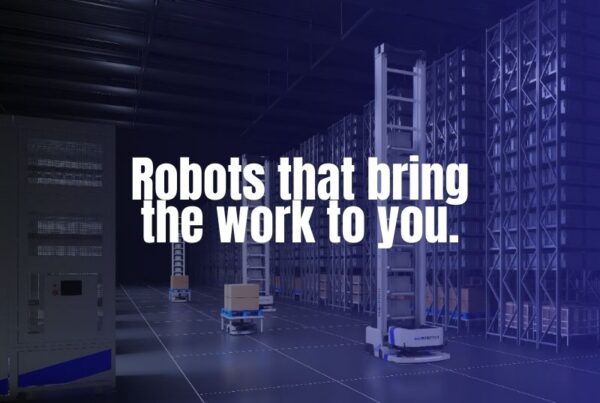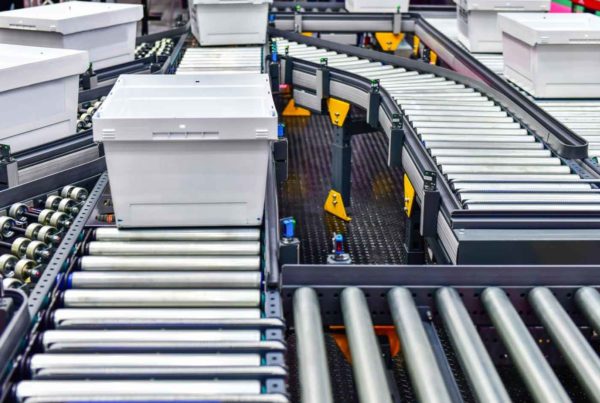Understanding Pick Modules in Warehouse Design: A Foundation for Scalable Fulfillment
In warehouse design, a pick module is as much a process as it is a physical structure. More than just a collection of racks and conveyors, pick modules integrate product storage, picking, and movement into a highly organized, multi-level layout. The goal: to accelerate and streamline order fulfillment with precision and efficiency.
At their core, pick modules are engineered systems that combine various storage solutions—such as pallet flow, carton flow, shelving, and pushback racks—with conveyors and mezzanines, creating a concentrated, high-throughput picking zone.
Key Purposes of Pick Modules
- Maximize warehouse space by utilizing vertical storage.
- Increase picking efficiency by concentrating pick zones.
- Streamline order fulfillment, especially in high-volume operations.
Core Components
- Storage Systems: Pallet racking, carton flow, pushback racks, and shelving.
- Conveyor Integration: Powered or gravity-fed conveyors transport items through various zones in the pick module and to packing stations.
- Mezzanines or Rack-Supported Levels: Enable multi-level picking zones to optimize vertical space.
Benefits
- Space Optimization: Supports high SKU density in a compact footprint.
- Faster Picking: Reduces walk time and increases order processing speed.
- Improved Accuracy: Enhances picking precision with pick-to-light or voice-directed technology.
- Lower Labor Costs: Efficient layouts and automation reduce manual labor needs.
Applications
- E-commerce: High-speed fulfillment for fast-moving SKUs.
- Retail: Efficient inventory processing and replenishment.
- Grocery: Supports accurate, high-volume grocery picking and packing.
Types of Pick Modules
- Single-Level: Ground-level configurations ideal for smaller operations.
- Multi-Level: Rack-supported or mezzanine-based designs for maximizing vertical space.
- Hybrid Systems: Blends manual picking with automation such as AMRs (Autonomous Mobile Robots).
Key Design Considerations
Before implementing pick modules—especially with future automation in mind—consider:
- Product weights and dimensions.
- Operational workflow and labor availability.
- Current vs. target throughput rates.
- Facility layout, including stairs, conveyors (gravity or powered), and spiral options.
- Structural capacity for future automation—mezzanines must be pre-engineered for added loads.
Unique Design Consideration:
When designing and implementing pick modules or any mezzanine-based warehouse structure, it’s important to recognize that regulations can vary significantly by state, county, province, or district. Local building codes and permitting requirements often differ not only in scope but also in how specific structures—such as mezzanines—are classified and evaluated.
One common distinction lies in how regulatory authorities view freestanding mezzanines versus rack-supported mezzanines. In some jurisdictions, these two structures are treated differently in terms of code compliance and impact on facility planning requirements.
For example, certain local codes may count the entire square footage of a mezzanine toward a facility’s total floor area. This expanded footprint can influence a variety of building requirements, including:
- Parking allocations
- Number of required restrooms
- Egress routes
- Fire protection systems
In contrast, other regulatory bodies may only consider the added aisle space or areas with clear access when calculating the impact of a rack supported mezzanine. These discrepancies can significantly affect project scope, cost, and timeline.
To avoid costly surprises or delays, it’s essential to engage early with local permitting authorities and design partners familiar with the local code landscape. Understanding how your mezzanine or rack-supported structure will be interpreted under applicable building codes ensures smoother approvals and more accurate planning from the outset.
Ultimately, proactive code compliance and clear documentation can make the difference between a seamless installation and a prolonged, expensive permitting process.
This is one more example where partnering with the experts at PeakLogix can provide significant value and positively impact the success of your project.
Conclusion
Pick modules are foundational to scalable, efficient warehouse operations. When integrated with a Warehouse Management System (WMS) and automation technologies, they serve as a powerful engine for lean, high-throughput environments. Properly designed from the start, they can adapt and scale with your operation—helping you meet today’s demands while preparing for tomorrow’s growth.
Ready to Transform Your Warehouse?
PeakLogix is here to help you analyze, design, and implement smarter storage solutions that improve productivity, maximize space, and set you up for sustainable growth.
Contact us today or call us at 1-800-123-4567 to schedule a consultation.





